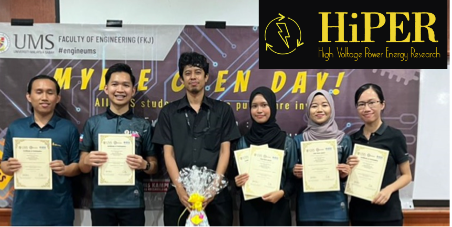Self-Powered LED System Using Carbon-Based Nanofluid Photothermoelectric Storage
Led by Ts. Dr. Megat Muhammad Ikhsan Bin Megat Hasnan.
Ts. Dr. Megat Muhammad Ikhsan Bin Megat Hasnan joined the Faculty of Engineering at Universiti Malaysia Sabah under the Electric and Electronic Programme as a senior lecturer on November 20, 2021, until the present. He received a degree, a master's degree, and a Ph.D. from the University of Malaya, Kuala Lumpur, Malaysia. Currently, Dr. Megat is actively pursue his research activities under the High Power Energy (HiPER) Research Group, in the field of renewable electrical power energy harvesting from heat waste and include impedance spectroscopy, thin film technology, plasma technology, density functional theory, advanced functional material development, electrical energy conversion device design, and fabrication. As a senior lecturer in the Electric and Electronic Programme of Faculty Engineering at Universiti Malaysia Sabah, Dr. Megat uses the fundamentals of electrical impedance spectroscopy as the main component of his research and his teaching development, which successfully secured national grant funding, visiting research fellow and international research collaboration, research agreement and consultancy. In 2022, through HiPER, as advisor to the 3rd year Electric and Electronic Integrated Design Project, Dr Megat had brought his team’s prototype entitled "Self-Powered LED System Using Carbon-Based Nanofluid Photothermoelectric Storage" that presented at International Conference on Advances in Manufacturing and Materials Engineering: ICAMME 2022, 9—10 August, Kuala Lumpur, Malaysia and National Innovation and Invention Competition (NIICe) 2022, 22 August, UTHM, Malaysia and awarded with silver medal.




